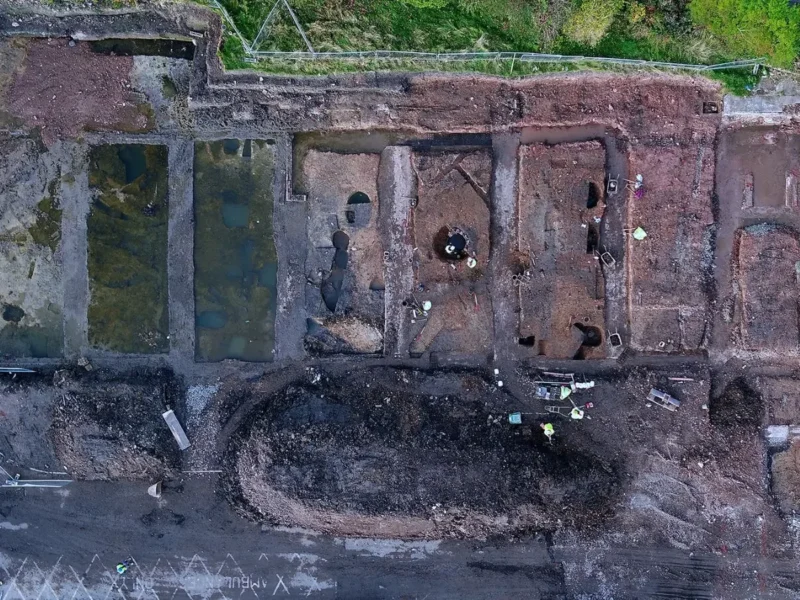Project Officer Gav Robinson blogs about his archaeological methods and teaching moments.
As an archaeologist with nearly 27 years of field experience under my belt I am often surprised by how little I know. Archaeology is such a vast and complex subject and to be good at it, the practitioner has to always be learning. Little ‘teaching moments’ often materialise as pleasant surprises on site or out of post-excavation analysis work, such as unusual artefacts in strange places or exciting unexpected radiocarbon results. So, in the spirit of this continual struggle for knowledge, and as a lesson for the aspiring archaeologist, I’d like to answer a question I am sometimes asked:
“How come you keep finding early prehistoric archaeology wherever you are sent?”
There is no short answer to this question, but equally, there is no magic trick. It is partly a case of knowing what to look for and where to look for it, a heap of tenacity, the application of the scientific method, and the confidence to search for the elusive pockets of nationally important artefacts and ecofacts within the multitude of ‘natural’ features.
The best example I can provide is a small site at a Stainton Quarry near Barrow-in-Furness (Robinson et. al 2020). At this site, trial-trenching had exposed three small features containing possible Early Neolithic pottery, but when the site was stripped all that was apparent was a few scrappy root boles and possible tree throw holes (a depression created in the subsoil by a tree). But undeterred, the team set about diligently sampling the natural features and digging out the grykes (natural cervices in the exposed limestone paving).
The first week produced no archaeology, but, in the next week, everyone’s hard work paid off when approximately 1.5kg of Early Neolithic pottery, two polished stone axe heads and a multitude of charcoal-rich deposits were discovered within a tree-throw hole and down a gryke. During the analysis phase of works, all of the sampled soil was processed, refloated, then refloated again to maximise recovery of macrofossils. Also, radiocarbon dating, Bayesian analysis and absorbed residue analysis was undertaken.
The end result was a nationally significant site with one of the largest assemblages of Early Neolithic charred grain (in Cumbria) and the first evidence for Early Neolithic dairying in Cumbria.
So, my main advice to all field archaeologists would be don’t assume (prove it instead), don’t ignore tree-throw holes, look for possible soil reservoirs (e.g. hollows and grykes) and make sure you take plenty of soil samples where you even suspect prehistoric remains exist.








